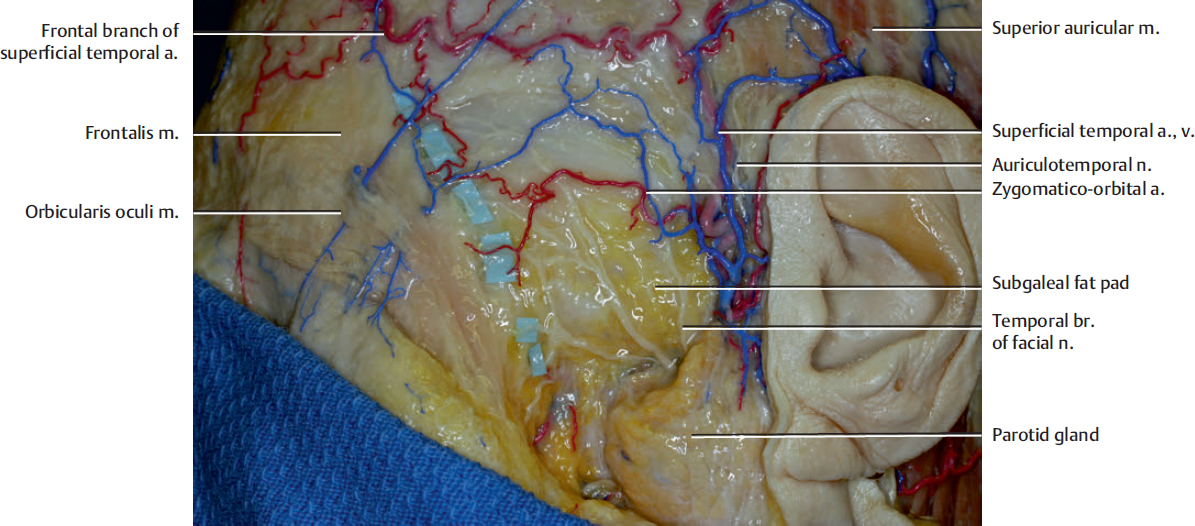6 Temporal Region
Fig. 6.1. The temporal region. A part of the temporoparietal fascia has been removed to show the temporal branches.
The temporal branches and communication branches are shown. The temporal branches of the facial nerve leave the parotid gland immediately inferior to the zygomatic arch. The nerve provides motor innervation to the frontalis, to the upper orbicularis oculi muscles, and occasionally, to the corrugator muscle. There are 3 to 5 temporal branches and the most auricular sided (blue rubber under it) branch innervates the superior auricular muscle. The other branches innervate the frontalis and upper orbicularis muscles.
The auriculotemporal nerve ascends on the side of the head with superficial temporal vessels. It supplies the skin of the temple and the upper part of the auricle.
The zygomatico-orbital artery is a constant branch from the superficial temporal artery to the orbicularis oculi muscle.
The superior auricular artery is a branch from the superficial temporal artery, and it runs onto the upper part of the helix.
The transverse facial artery is shown after opening the masseteric fascia. The zygomatic branches are also under this fascia and run forward with the artery.
The superficial temporal vein runs superficially on the superficial temporal artery in front of the auricle and temporal region. However, the artery runs superficially on the vein in the vertex region (see Fig. 13.2a).
The temporal branches entering the frontalis muscle and the upper orbicularis oculi muscle are shown (blue rubbers under branches) after removing a part of the temporoparietal fascia. The temporal branches of the facial nerve travel in the subgaleal fat pad. The temporal branches divide into mean three rami with numerous twigs, entering deeply into the lateral end of orbicularis oculi muscle and the frontalis muscle. The temporal branches of the facial nerve generally run below the frontal branch of the superficial temporal artery.
Stay updated, free articles. Join our Telegram channel

Full access? Get Clinical Tree










